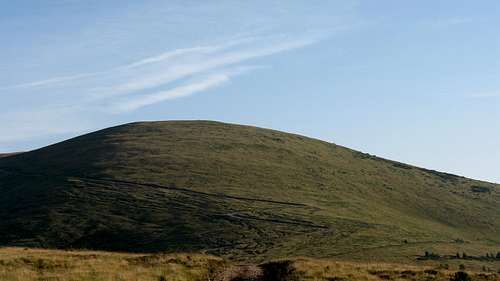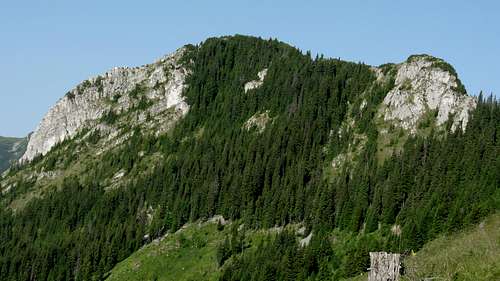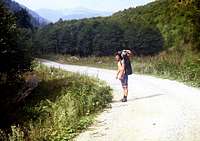| Name |
Photo |
Status |
Short description |
| Mănăstirea Horezu |
![]() |
UNESCO World Cultural Heritage Site |
The monastery of Horezu is the most important monastic site in Walachia. The authenticity of its architecture, paintings, carved stone and wooden decorations makes this exquisite cultural heritage site the epitome of the Brancovenesc style. Restored during the communist period, Horezu Monastery is one of the most popular pilgrimage sites in Romania. Truly unique in the southeastern Europe, the monastic ensamble of Hurezi best illustrates the features of the traditional post-Byzantine art. About 4 km northeast of its namesake village. |
| Cozia-Lotrişor |
![]() |
UNESCO World Natural Heritage Site |
Since 2017 part of Ancient and Primeval Beech Forests of the Carpathians and Other Regions of Europe. Different beech forest communities, pure and mixed with high degree of naturalness and remarkable presence of pure sessile oak covering an area of over 1000 ha, whose elevation varies from 300 to 1500 m. It consists of early Jurassic formations (breccias and sandstones). Warmer climate than in the rest of the Southern Carpathians supports special tree species composition. Steep rocky slopes of the Olt defile are natural barriers which contribute to the protection of this site against anthropogenic disturbances. Located entirely in the strictly preserved zone of Cozia NP. Approximate boundaries: Basarab-Lotrisor gorges-Vf.Naratu-Vf.Sturii Olanestilor. Through the center of the area winds a path marked with red stripes. |
| Cascada Scoruşu |
![]() |
|
One of the major attractions of the Căpăţânii as well as one of the grandest waterfalls in all of the Carpathians. Its height is estimated to be 80 to 100 meters (its width varies between 3 and 7 m). Located near Bucureasa canyon, about 3 km south of Mălaia village. A brand new trail waymarked with red dots starts from Mălaia reservoir. |
| Casa de Piatra |
![]() |
|
Literally the House of Rock, it is one of the most impressive karst features in the Căpăţânii. Unfortunately, this natural limestone arch is hidden in the woodland of the Buila–Vânturariţa massif, half a kilometer northwest of Pătrunsa hermitage. Yellow dots plus an unmarked path. |
| Cheile Cheii |
![]() |
|
The Cheia Gorge is one of the deepest and wildest of its kind in Romania. Also known as the Recea Gorge, it is about one kilometer long, 300 meters deep and – at its narrowest place – just two meters wide. Most of the time, the river is merely a brook which cascades over limestone boulders, until at some point (Sorbul Mare) it disappears into a swallow hole to resurge several hundred meters away. The gorge can be traversed via a narrow path called Brâna Caprelor (Goat Trail), closed in winter, with an exposed passage elevated about 200 m above the bottom of the canyon. In the northeast part of the Buila–Vânturariţa massif, blue triangles. |
| Poiana Târsa |
![]() |
|
A deserted and wild mountain glade with almost two-meter tall lush vegetation in the heart of the Narăţu massif. An important spring of water is located about 100 meters north of the glade. Accessible via red dots (well marked) or blue crosses (very old marks, hard to spot). |
| Mânăstirea Frăsinei |
![]() |
Historical Monument |
A hermitage was built here in 1710. Between 1787-1848 it was abandoned and a monastery was founded in 1863. The Great Church was painted by a Transylvanian painter Misu Pop. The strictest monastic practices are observed here. Women are not allowed to enter. In the southeast chunk of the mountains, about five kilometers north of Băile Olaneşti. |
| Lacul Balota |
![]() |
|
At 1200 m, near the Luncavăţ canyon, a convenient campground. The legend has it that a treasure of outlaws is hidden at the bottom of this man-made reservoir. Accessible via a red cross trail from Vaideeni village. |
| Peştera Liliecilor |
![]() |
|
This cave was first investigated in 1929, three access points, only one open to a public. Inside is Ovidenia church which is partly carved in stone. Layers of bat excrement are up to 2 m thick. Situated in the Bistriţa Gorge, about 1 km north of a namesake monastery. An interpretive trail marked with blue triangles. |
| Cheile Olteţului |
![]() |
Nature Reserve |
Established in 1982 and declared a Site of Community Importance in 2000. The Oltet river has carved a canyon in a limestone band on a length of approximately 2 km. The area teems with karst formations. In the southwestern part of the Căpăţânii, about 1 km north of Polovragi village, blue triangles/red dots. |
| Poiana de Piatra |
![]() |
|
A romantic glade surrounded by picturesque karst paradise, one of the most wonderful nooks in all of the Carpathians. In the central part of the Buila-Vânturariţa massif, red triangles. |
| Schitul Pătrunsa |
![]() |
Sacred Site |
Founded in 1740. The legend has it that the mother of Bishop Clement of Râmnic, who founded Pătrunsa monastery, found shelter in this place when trying to escape the Turkish invaders. It is located in the eastern foothills of the Buila-Vânturariţa massif, about 5 km north of Pietreni village. Red triangles plus blue crosses. |
| Pietrele Stroieştilor |
![]() |
|
An interesting formation of vertical lapies located by a yellow cross/blue stripe trail, a stone's throw from Căşăria refuge. |
| Cascada Lotrişor |
![]() |
|
A man-made, 30 meters tall cascade located in its namesake gorge. Accessible via red dots. |
| Peştera Polovragi |
![]() |
Nature Reserve |
This cave is a former meander of the Olteţ located about 25 m above its current riverbed at 670 m. It is carved in Jurassic limestone and consists of 11 km long galleries, of which about 700 m are accessible with a guide. Polovragi cave has optimal conditions with a constant temperature of 9 degrees Celsius and 90 % humidity. As for the specific formations, columns, curtains and coralloids are worth mentioning as well as non-calcareous forms, e.g. Leopard's skin. Each distinct formation has a name corresponding to its shape. A former hermitage is marked with a symbol of death from the 19th century. The legend has it that Zamolxis lived in this cave after the defeat of the Dacians by the Romans. Owing to the fact that Polovragi cave is home to approximately 300 bats, it is closed to the public during hibernation period (December to March). Situated 300 m north of the mouth of the Olteţ canyon. Accessible via blue triangles. |
| Cheile Cernei |
![]() |
|
Calcareous pinnacles on a length of about 2 km. A cross carved into a cliffy wall called Piatra Crucii. A rock formation named Piatra Cernei with Sfinxul Cernei outcrop. Moara Dracilor falls and Cheişoara cascade. A needle called Piatra Colţului that resembles a tusk. In the southwestern corner of the mountains, about 6 km north of Cerna village. A blue cross trail. |
| Poiana Scărişoara |
![]() |
|
One out of eight designated campsites in the Buila-Vânturariţa National Park. There is also a shelter with a nearby spring. In the southeastern sector of the mountains, about 4 km north of Pietreni village. Red triangles or yellow dots from Bărbăteşti. |
| Schitul Pahomie |
![]() |
|
Founded in 1520, named after a prince who became a monk. According to legend, he and his companions, of whom Sava the Outlaw was the most prominent, found salvation here when trying to escape from Mihnea the Bad. Pahomie's monastery is a unique, historic place in Romania as it played an extraordinary role in bringing together the Christian faith and the anti-communist armed resistance for almost a decade in the mountains of Oltenia. The fame this place enjoys is due mostly to Iosafat, a monk who spent 45 years of solitary life at Pahomie until his tragic end in 1987. In the southeastern sector of the mountains, about a dozen km northwest of Cheia village. A red cross trail. |
| Radiţa-Mânzu |
![]() |
Nature Reserve |
Also known as Bacea, encompasses an area of 10 ha at elevations from 650 to 950 m. It protects peculiar landforms formed of conglomerate that are home to rare species of flora. In the Olăneştilor massif, about a dozen km northwest of Băile Olăneşti resort. Yellow stripes plus an unmarked path. |
| Lacul Marginea |
![]() |
|
Sits at the edge of a spur trending south from the Ursu massif. Red triangles from Vaideeni or blue crosses from Tănăseşti. |
| Peştera Urşilor |
![]() |
|
This cave, approx. 400 m long, has an impressive portal, which is 35 m tall and 20 m wide. The cave is made up of the main and several smaller galleries. Fossils of the cave bear and traces of humans from the Neolitic period have been found here. Located about 50 m above the bottom of the Bistriţa Gorges in the southwest part of the Buila-Vânturariţa. Blue triangles from Bistriţa village plus an unmarked path (railing-assisted scramble). |
| Cheile Bistriţei |
![]() |
|
This wonderful, about 1.5 km long canyon belongs in the narrowest ravines carved in limestone in Romania - at its narrowest place it is only 4 m wide. In the southwest part of the Buila-Vânturariţa. Blue triangles from Bistriţa village. |
| Poiana Târnovu Mic |
![]() |
|
A convenient site to pitch a tent. In the SW part of the Târnovu massif. Blue stripes/dots from Ciunget. |
| Mânăstirea Alina-Maria |
![]() |
|
Sitting at the highest elevation of all sacred sites (1700 m), consecrated in autumn 2014, it has 32 photovoltaic panels with a capacity of 8 kW. In the center of a lateral ridge trending south from Ursu massif, about 2 km south of Vf. lui Roman. Red triangles from Vaideeni. |
| Pietrele Goale |
![]() |
|
Formed of conglomerate. In the center of the Narăţ massif, on the edge of Poiana Târsa. Red dots/blue crosses from Brezoi. |
| Cascada Moara Dracilor |
![]() |
|
About 5 meters tall. In the Cerna Canyon, about 6 km north of its namesake village. Blue crosses from Cerna village. |
| Peştera Arnăuţilor |
![]() |
Nature Reserve |
A 150 m wide cave with a huge entrance (24x15 m, free entry), easily seen from the bottom of the valley. In the northernmost tip of the Buila-Vânturariţa, on the right bank of the Olăneşti Canyon. Yellow stripes/tringles from Băile Olăneşti resort. |
| Cheile Mânzului |
![]() |
|
Also known as Cheile Olăneşti, Cheile Folea, Valea Rea or Cheile Râului Sec, this canyon is two kilometers long and boasts spectacular limestone formations with vertical walls, caves and a cascade. In the northermost tip of the Buila-Vânturariţa. Yellow stripes/tringles from Băile Olăneşti resort. |
| Poiana lui Pavel |
![]() |
|
A superb vantage point, which affords fine views of the Cozia massif with clusters of primeval beech forests (a World Natural Heritage Site). In the center of the Narăţ massif. Red dots from the Olt defile. |
| Mănăstirea Polovragi |
![]() |
|
A convent founded in 1505. The temple is built in the Byzantine style. Its murals were painted by renowned masters of the Brancoveanu school from Horezu. In the southwest part of the mountains, at the mouth of the Oltet Canyon, about one km north of its namesake village. |
| Muntele Basarab |
![]() |
|
Formed of limestone and conglomerate with an admixture of gneiss and sandstone, the massif towers above the Olt defile (Turnu Reservoir). In the east reaches of the mountains (Olaneştilor massif). |
| Padurea Polovragi |
![]() |
Nature Reserve |
Protects mighty chestnut trees on an area of 10 ha. In the southwest part of the mountains, at the mouth of the Olteţ Canyon. Red dots from Polovragi village. |
| Cheile Lotrişor |
![]() |
|
A gorgeous ravine separating the Narăţ and the Olaneştilor massifs. Carved in gneiss and conglomerate, it is around five kilometers long. In the easternmost part of the mountains. Red dots from the Olt defile. |
| Mănăstirea Bistriţa |
![]() |
|
Dates back to 1490. The present, neo-gothic church has generous dimensions similar to a cathedral with a huge tower. In the southwest corner of the Buila-Vânturariţa massif. Blue triangles from its namesake village. |
| Just a picturesque tarn |
![]() |
|
In the eastern part of the mountains, near Folea summit. Yellow triangles (hard to spot). |
| Cheile Luncavăţului |
![]() |
|
In the central part, about an hour's walk up from Balota Lake. Red dots. |








































































